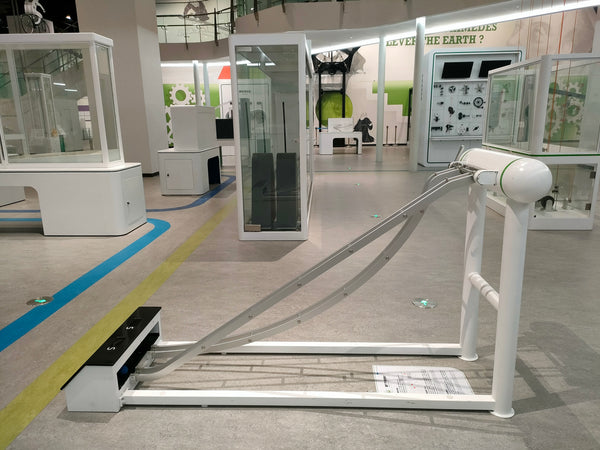Exploring the Brachistochrone: In-depth Analysis of Basic Data on the Fastest Descent

Introduction: The Brachistochrone, a popular interactive product, combines different styles of tracks, including straight lines and curves of varying radii, to observe the descent speed of a ball. By studying the basic data of the fastest descent, this article delves into the differences in descent speed on different tracks.
-
Principles and Objectives of the Brachistochrone: The Brachistochrone is based on the principle of objects freely falling under the influence of gravity. Its objective is to showcase the impact of gravity on motion by observing the descent speed of a ball on various tracks and aid in understanding fundamental concepts of kinematics.
-
Descent Speed on Straight Tracks: On straight tracks, the ball descends directly under the influence of gravity. Following the laws of freely falling objects, the descent speed on straight tracks is uniformly accelerated. With the acceleration due to gravity approximately 9.8 m/s², the descent speed of the ball on a straight track gradually increases.
-
Descent Speed on Curved Tracks: Curved tracks are the intriguing aspect of the Brachistochrone. By altering the curvature and radius of the track, the descent speed of the ball on curved tracks differs from that on straight tracks. The design of curved tracks subjects the ball to horizontal centripetal forces, which affect its descent speed.
-
Variation in Descent Speed on Curved Tracks: The descent speed of the ball on curved tracks varies with different radii. When the curve has a larger radius, the ball experiences a greater centripetal force, resulting in a faster descent speed. In contrast, a smaller radius exerts a lesser centripetal force, causing a slower descent speed.
-
Exploring Basic Data on the Brachistochrone: To delve into the fundamental data of the Brachistochrone, sensors and timers can be employed to record the descent time and distance of the ball on different tracks. By comparing the data from straight and curved tracks, we can quantitatively analyze the differences in descent speed.
-
Practical Applications and Significance: The Brachistochrone not only provides entertainment and amusement but also fosters interest in and comprehension of physics. By observing and comparing the descent speed of the ball on various tracks, we gain a better understanding of the laws of motion under the influence of forces and explore related concepts in kinematics.
Conclusion: The Brachistochrone, employing straight and curved tracks, enables the observation of the descent speed of a ball. On straight tracks, the descent speed is uniformly accelerated, while on curved tracks, the descent speed is influenced by the curvature. In-depth analysis of the basic data of the fastest descent allows us to comprehend the laws governing object motion and apply these concepts in practical scenarios. The Brachistochrone serves as both an entertaining product and a catalyst for generating interest in physics, promoting the dissemination and learning of scientific knowledge.
